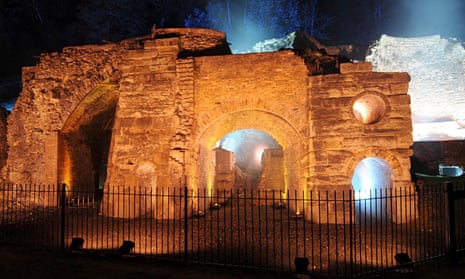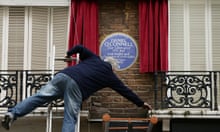Eastbourne’s fire-ravaged pier and the evocatively named Bedlam Furnaces near the world-famous cast-iron bridge across the Ironbridge Gorge are among new buildings added to England’s heritage at risk register.
They are joined by Europe’s largest and most complete tin mine at Geevor, Cornwall, and the Sussex shipwreck of an 18th century warship Hazardous which have been flagged as needing urgent rescue.
English Heritage will on Thursdaylaunch its 2014 Heritage at Risk report at a place once on the register but which, after many delays, does now seem to be on the verge of rescue and regeneration, Battersea Power station.
In total 662 sites have been added to the register, although the figure has fallen overall.
The organisation’s chief executive Simon Thurley said more than a third of buildings on the original list in 1999 are still there today.
“We can’t give up on all these incredibly important historic buildings,” said Thurley. “Getting them back in use will lift the blight from historic areas, bringing back in to use really important buildings and giving people a sense of pride in where they live.
“As the economy starts to improve and the demand for development increases, we need to push these buildings forward and find a future for them.”
English Heritage has identified five entrenched cases which it says particularly deserve attention and are prime candidates for redevelopment and re-use.
They are:
The enormous red brick London Road fire station in Manchester city centre, built from 1901-06 which was meant to become a hotel but has been empty for years
The Price and Kensington Teapot Works, one of the oldest potteries to survive in Stoke-on-Trent whose buildings had their doors closed in the 1990s
The Carriage Works in Bristol, described locally as the city’s worst eyesore – built in 1862, not used since 1977
State Cinema in Grays, Essex, one of the best preserved “super cinemas” of the 1930s which has been on the register since 2002;
The Pump House at Abbey Mills, Stratford, east London, known as a “cathedral to sewage” which lies redundant.
For the first time English Heritage has also conducted a review of all listed places of worship, 90% of which are looked after by the Church of England. The register reveals that 887 buildings or 6% – with their leaking roofs and broken gutters – can be described as “at risk”.
English Heritage says it is the most complete survey of “at risk” heritage to date, but is not comprehensive with, apart from London, only grade I and grade II* included on the register.
As well as sites in desperate need of rescue, English Heritage also highlighted success stories including the London tomb of Emile Blondin, the man most famous for crossing Niagara Falls on a tightrope. It has been taken off the at risk register.



